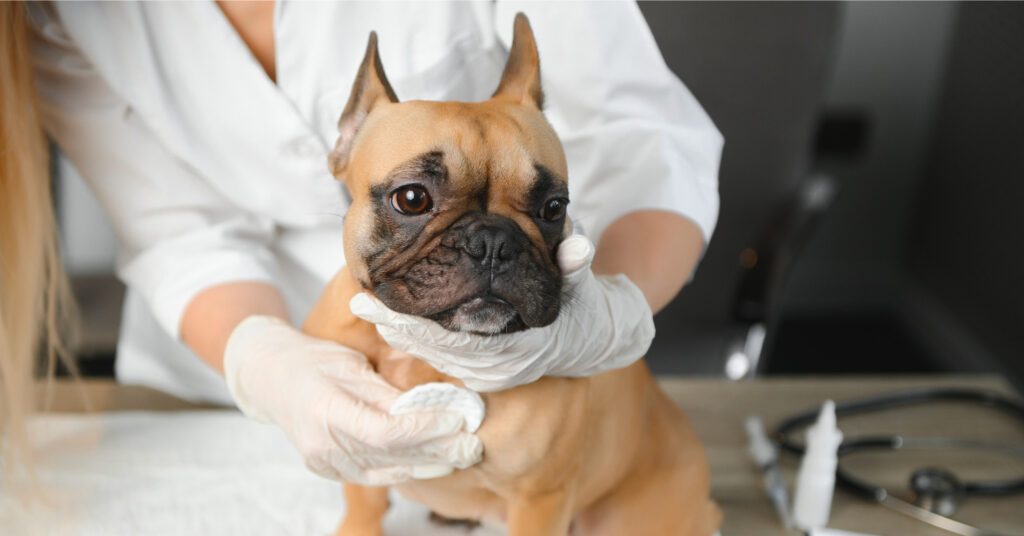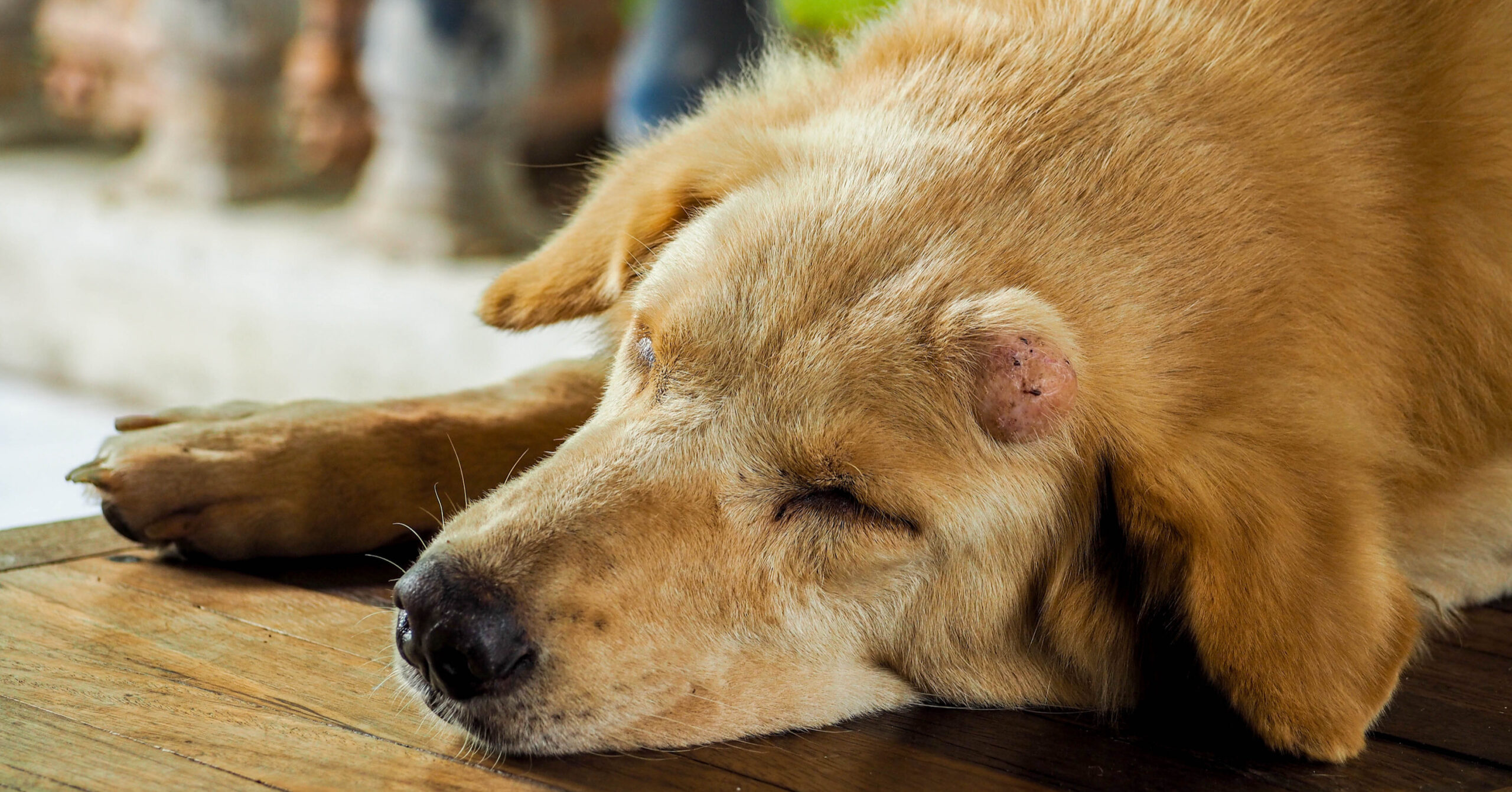Key Points
- Mast cell tumors are one of the most common types of skin cancer in dogs, and they can often be treated with surgery and radiation.
- MCTs come in different grades, with high grades being more aggressive and dangerous.
- In most cases, the sooner you identify a tumor, the better the prognosis, so don’t hesitate to contact your veterinarian if you identify a new growth on your dog’s skin or body.
No one wants to find a strange bump or growth on their dog’s skin. And if some frantic online searching has brought you here to read about mast cell tumors in dogs (or MCTs), then you may have already jumped straight ahead to the worst-case scenario. However, it’s important not to get ahead of yourself — or your veterinarian’s prognosis.
So, whether your pup has just been diagnosed with a mast cell tumor, or you suspect they might have one, we’re here to provide information.
Mast cell tumors are a common type of skin tumor in dogs. Though a cancer diagnosis can be scary and certainly shouldn’t be taken lightly, in many cases, these tumors are easily treatable and have a good prognosis. Here’s what you need to know about MCT symptoms, causes, and treatment in dogs.
Mast cell tumor symptoms
Most mast cell tumors take the form of a raised bump or lump on the skin, though their appearance may vary widely. The tumors are typically ulcerated or hairy, and depending on the internal chemistry of the tumor, may grow or shrink.
MCTs are often called “great pretenders” because they are easily mistaken for more benign ailments like insect bites, warts, and allergic reactions. When in doubt, always talk to your veterinarian, as only they can properly diagnose tumors in dogs.
In the meantime, if you find a growth on your dog, it’s important not to touch it or mess around with it. If it is a tumor, the mast cells can release chemicals into the bloodstream that trigger an allergic reaction. This process is called degranulation, and it can cause additional side effects such as ulcers, vomiting, loss of appetite, lethargy, and black stool. Similarly, you should keep your dog from biting or scratching the growth.
Causes
There’s no one cause for canine mast cell tumors, but a mutation to a protein called KIT, which affects the replication of cells, is a common culprit.
Certain breeds are more susceptible to canine mast cell tumors, including Boxers, Bull Terriers, Boston Terriers, Golden Retrievers, Labrador Retrievers, Schnauzers, and Pugs. Boxers and terriers are most prone to MCTs, making up about 50% of all cases, according to the American College of Veterinary Surgeons.
Diagnosis
Mast cell tumors are the most common skin tumor in dogs, and they are most often diagnosed in middle-aged pups (though all ages can be affected). They are commonly diagnosed with fine needle aspiration (FNA) or a tissue biopsy.
Other diagnostic tools may be used to identify possible metastasis, including:
- Blood and urine samples
- Abdominal ultrasound
- Chest radiographs
- CT scans
Although MCTs most commonly affect the skin, they also affect internal organs including the spleen, lymph nodes, liver, intestine, or bone marrow.
Treatment
While MCTs are serious, they are also one of the most treatable cancers in dogs.
After diagnosis, your vet or veterinary oncologist may recommend a prognostic panel on a tissue sample. The results will provide more information to determine the likely outlook for the disease. The prognosis is graded from I to III in terms of the tumor’s aggression and the likelihood of metastasis, with grade I tumors being least aggressive and grade III tumors being most aggressive. The grade of the prognosis will affect which treatment options your vet recommends.
At higher grades, successful treatment becomes more difficult, but lower-grade MCTs can be easily treated with surgery to excise the tumor. As the severity of the case increases, chemotherapy may become a necessary supplement. MCTs are highly sensitive to radiation therapy, so this treatment can offer a high success rate in treating the condition.

Your pup’s treatment plan is based on their prognosis, and their prognosis depends on a number of factors, including:
- Your dog’s breed (whether they belong to a more high-risk breed, like terriers or bulldogs)
- Where the MCT is located (if it’s near a mucous membrane or on the face, that’s less favorable)
- The number of cells actively replicating in the sample.
Surgical excision is the most common treatment for MCTs. In order to ensure all cancerous cells are removed, surgeons use wide surgical margins (i.e., the cuts will be wider than the apparent area of growth). The excised tumor will likely be sent to a histopathology lab for further tests.
Drugs are also being developed to target the proteins responsible for MCT growth. These drugs are called tyrosine kinase inhibitors, or TKIs, and they specifically target cells with KIT mutations. This may provide an alternative to surgery in cases where surgical excision is not possible.
Recovery and care
A combination of surgical excision and chemotherapy is usually successful in curing low-grade tumors and mid-grade MCTs. However, high-grade tumors have a more complex prognosis. Even with treatment, dogs with very aggressive and advanced tumors may only live for a few months. Though no one likes to think about it, in these cases, palliative care may be the best option. In moments like these, it’s important to lean on your vet for support and advice.
In order to reduce some of the effects of degranulation, your vet may also prescribe antihistamines for your dog. These medications prevent the symptoms described above, including ulcers and nausea. This can play a role in palliative care, but it’s also a normal part of surgical preparation.
Prevention
If you notice any bump or swelling on your pet, you should bring them into the vet’s office. Even if the growth turns out to be benign, it’s better to be safe than sorry.
What to expect at the vet’s office
Your vet will likely carry out or schedule some tests to determine whether the growth is benign or malignant. They may consult a veterinary oncologist (an expert in pet cancers) to assist in diagnosis and development of treatment options.
While most vets still use the grade I to grade III system mentioned above, some use a two-grade system in which tumors are separated into high-grade and low-grade. This gives more discretion to the vet in determining a prognosis. In some cases, the entire tumor will need to be removed before the grade and prognosis can be fully determined.
The bottom line
Identification is the first step in treating mast cell tumors. Keep a close eye on your dog’s skin, carefully monitoring for any changes or growths. Take them to the vet right away if you notice any unusual bumps or swelling. The sooner you intervene with veterinary care, the better.
FAQs about mast cell tumors in dogs
- https://www.acvs.org/small-animal/mast-cell-tumors/
- https://www.ncbi.nlm.nih.gov/pmc/articles/PMC9648486/
- https://ksvdl.org/resources/news/diagnostic_insights/july2016/canine-mast-cell.html
- https://www.vetmed.msstate.edu/sites/www.vetmed.msstate.edu/files/presentations/8.24.18%20The%20Great%20Pretender%20%28Jennifer%20Black%29.pdf
- https://todaysveterinarypractice.com/oncology/simplifying-the-approach-to-canine-mast-cell-tumors/



